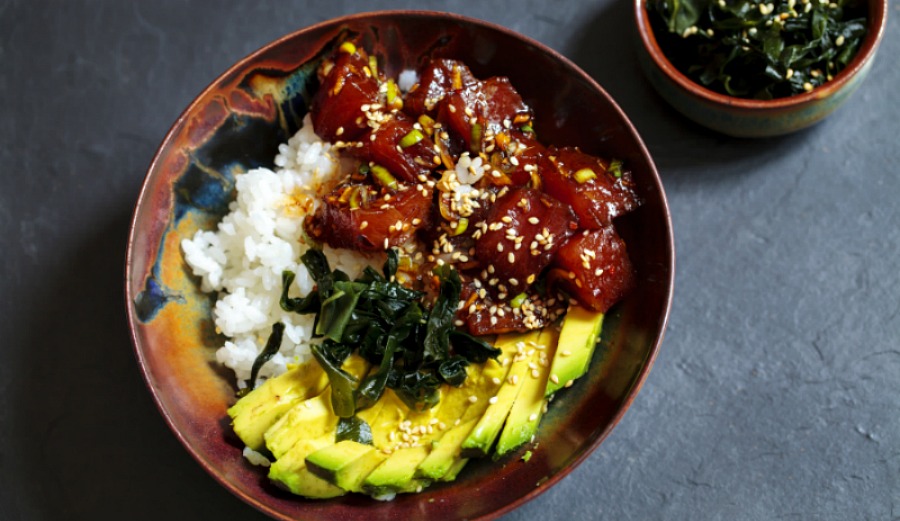
Photo: Shutterstock
Let me start by saying I am one of poke’s biggest fans, and I am deeply saddened to bring you anything but good news. Whether it’s from Kahuku Superette or Bear Flag, there’s nothing like the salty, seasoned taste of poke over warm rice or crispy chips. In fact, I ate so much poke last Saturday before I went surfing, the fish almost returned to the sea. However, there are other consequences to consider when indulging in this healthy, delicious trend.
For those of you who don’t know, poke is a traditional Hawaiian food. Typically, poke is seasoned chunks of raw fish served over rice. Most frequently yellowfin tuna aka ahi is the fish of choice. In Hawaii, you can find poke served everywhere from the gas station to a sit down restaurant, and lately, the dish has become increasingly popular in the cities of the mainland United States.
The past couple years, poke spots have popped up by the dozen in Los Angeles (I know as I have tried several of them…) and San Francisco. Now, even New York City has caught on to the poke trend. The New York Times recently reviewed four popular poke establishments. Poke bowls appeal to the new breed of paleo and health conscious diners looking for a delicious lunch or a quick bite for dinner, and the ahi tuna in poke bowls offers a hearty dose of protein, omega 3 fatty-acids, and B vitamins. Poke is no doubt a healthy option, but the growing popularity of the dish may have other negative consequences.
The problem with the poke boom is that yellowfin aren’t just a run-of-the-mill fish. Hawaiian chef, Mark Noguchi, shared with GrubStreet a reminder that “[Ahi] was a fish for royalty, caught by hand line- a top-of-the-food-chain fish.” Essentially, Noguchi refers to the fish’s place in nature. Ahi are considered top predators, and only healthy ecosystems with large stocks of smaller fish can support great numbers of the tuna. As ecosystems falter, top predators decline rapidly in number, as they require the most amount of energy per capita of any member of the ecosystem. Simply put, Ahi need to be able to eat a lot of healthy fish each day to grow and reproduce. This makes Ahi a less stable species than other more populous fish.
The increasing demand spurred by the poke trend and Asia’s increasing appetite for yellowfin could put stress on fish stocks worldwide. As is, Hawaii’s poke demand already exceeds the supply of local waters. More and more poke served in Hawaii is being caught elsewhere and shipped to the islands. The growing demand nationwide could have negative impacts on the yellowfin population, although it’s difficult to predict.
So let’s take a look at the current tuna situation. Sustainable fishing has a number of different environmental metrics we can apply to evaluate the situation. Some environmentalists worry primarily about the stock size (number of fish), while others are more concerned with by-catch, and others still with the green house gas footprint of the fishing method. Plus, the rate at which fish are caught can affect their ability to maintain a stable population. These metrics can all be weighed differently for different conclusions.
Currently, the yellowfin stocks appear stable (good news), but it’s difficult to determine how increasing demand will factor into this stability. Another plus is that in term of larger tuna, yellowfin reproduce very successfully. This helps the species maintain a strong population size even with environmental shocks (like fishing). However, on the other hand, yellowfin are migratory, and as global warming changes ocean acidity and temperature, these changes could take a toll on ahi by disrupting specific environments along their migration path. In sum, it’s difficult to determine exactly how a poke boom could affect a somewhat delicate species.
So the point is this: we can’t eat pounds and pounds of poke without a burden on our conscience. Like almost all resources, the number of fish in the sea is finite. If the poke trend continues to explode, it can easily lead to negative consequences. Hopefully innovative chefs will begin to take a look at other, more sustainable species of fish to experiment with in poke form, but for now, consider easing up on the poke bowls.

